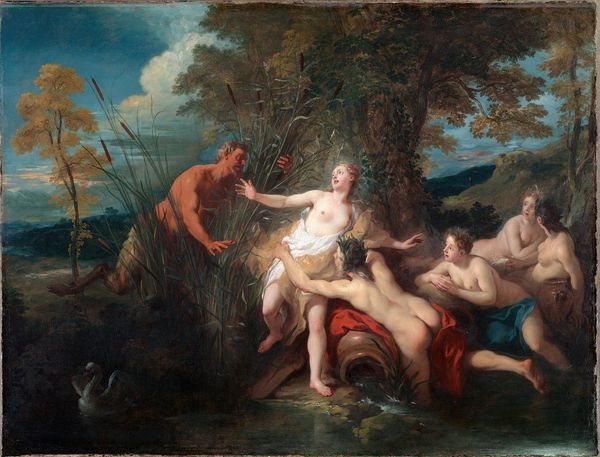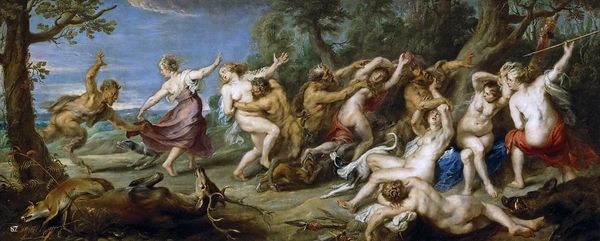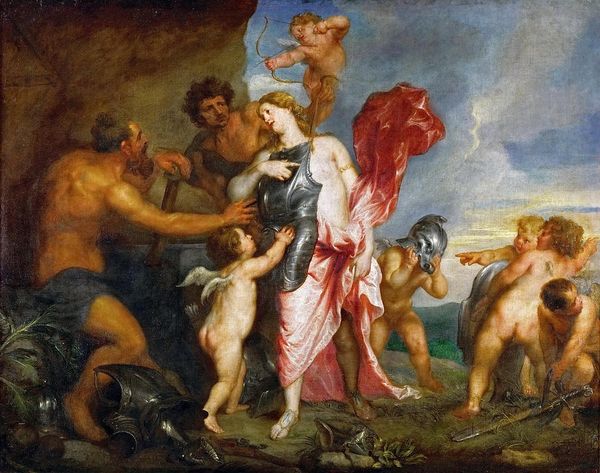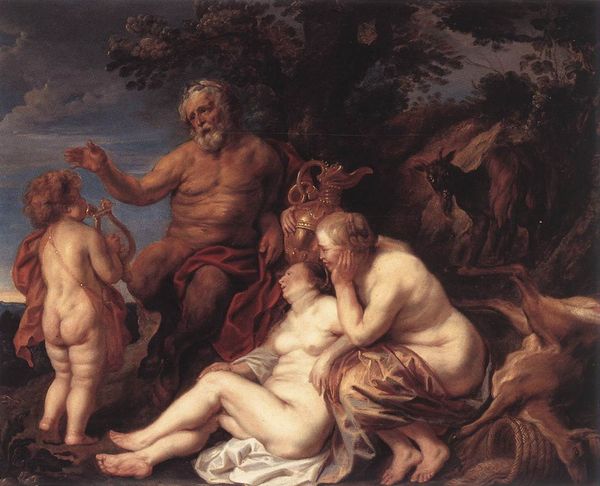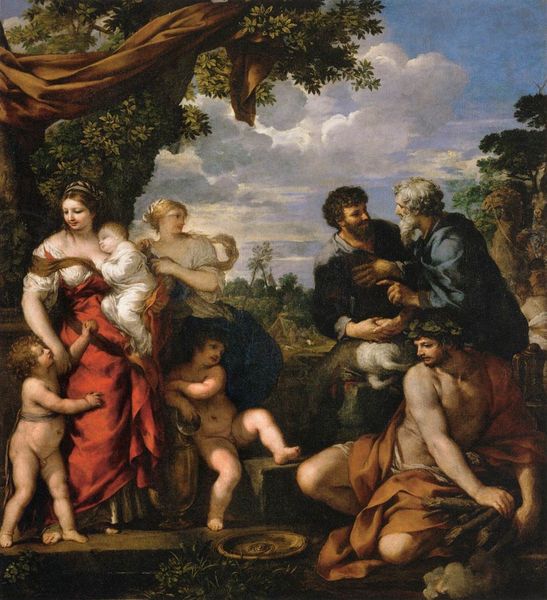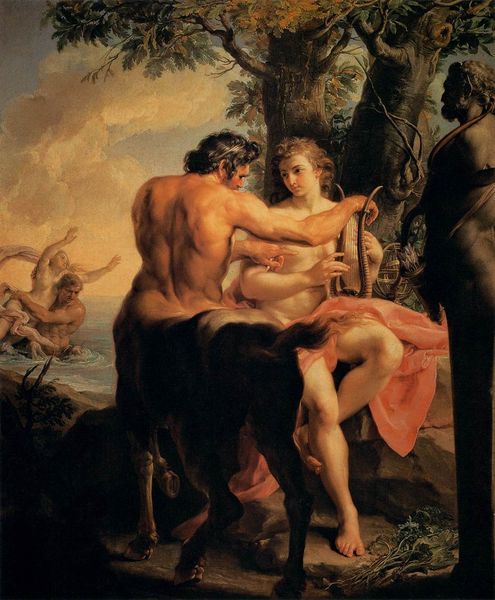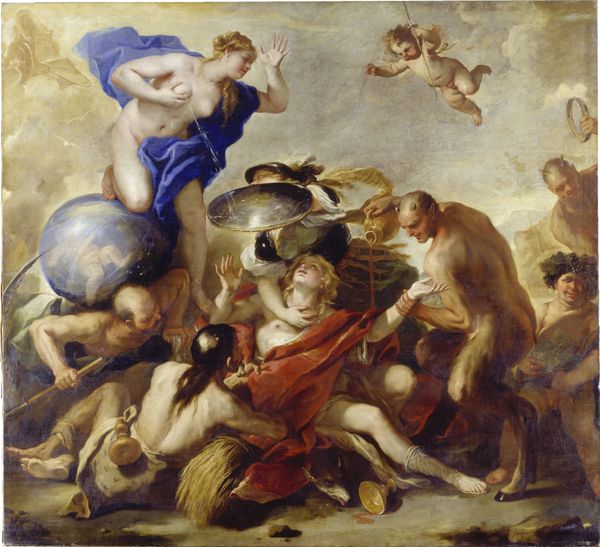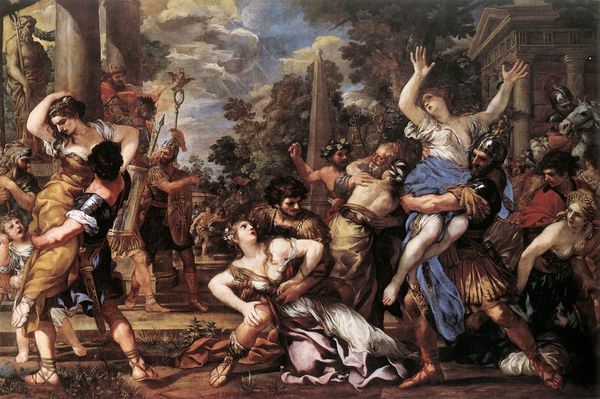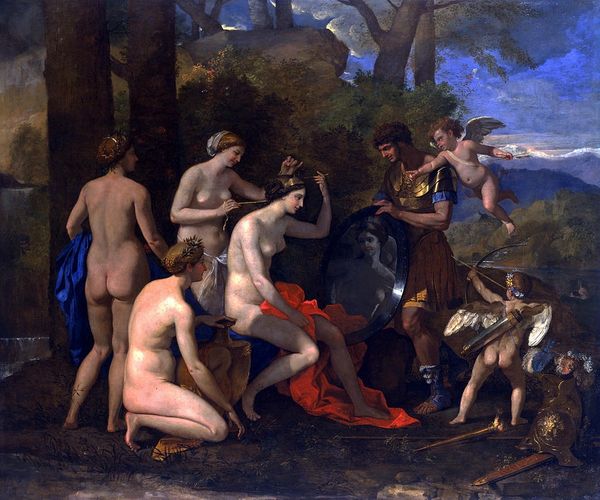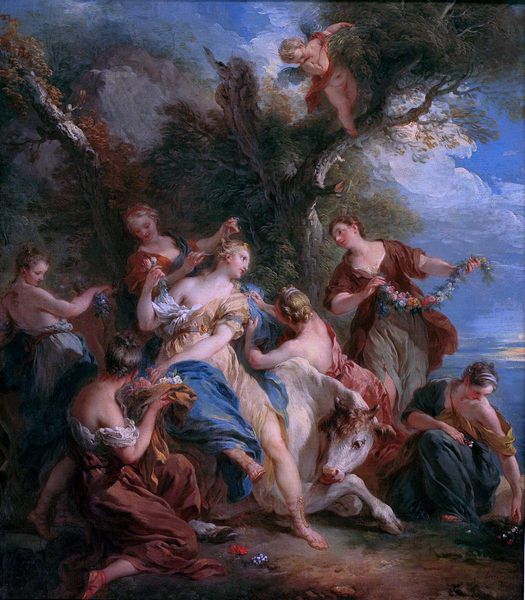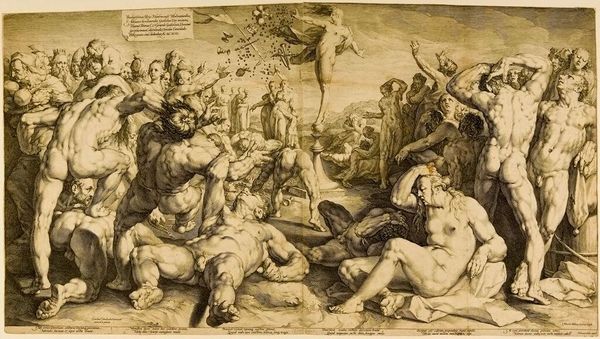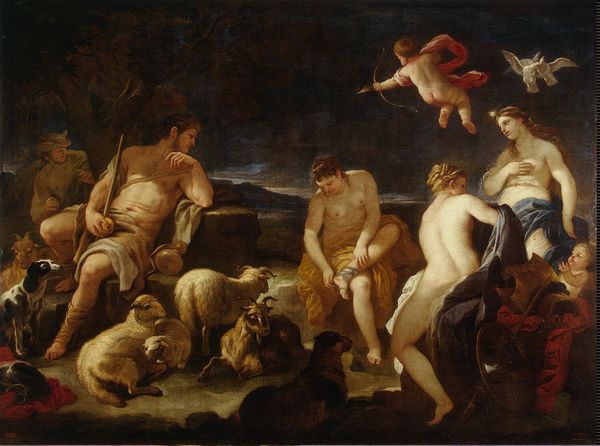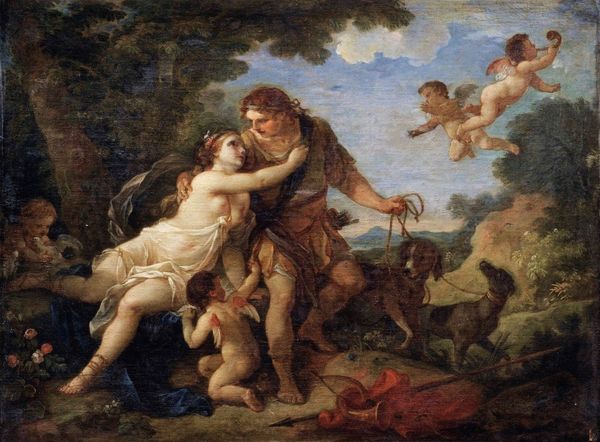
Copyright: Public domain
Hans von Aachen painted ‘The Judgement of Paris’ in oil on copper sometime around 1600. It shows a scene from classical mythology with a clear message about the politics of beauty and the role of the artist. Here, Paris must choose the fairest goddess, and by awarding the golden apple to Venus, goddess of love, he sets in motion the events that lead to the Trojan War. Von Aachen was working in Prague, at the court of Rudolf II. Rudolf was a famous patron of the arts, but also a rather weak and ineffectual ruler. So, it's interesting that Von Aachen is depicting beauty as a source of conflict and disruption. The artist is thus not simply reproducing a classical myth. Instead, through visual codes and historical associations, the painting comments on the social structures of its own time. The historian can illuminate these meanings through research into the cultural context and Rudolf's court. By appreciating that context, we can see that art is not simply a reflection of beauty, but a product of social and institutional forces.
Comments
No comments
Be the first to comment and join the conversation on the ultimate creative platform.
